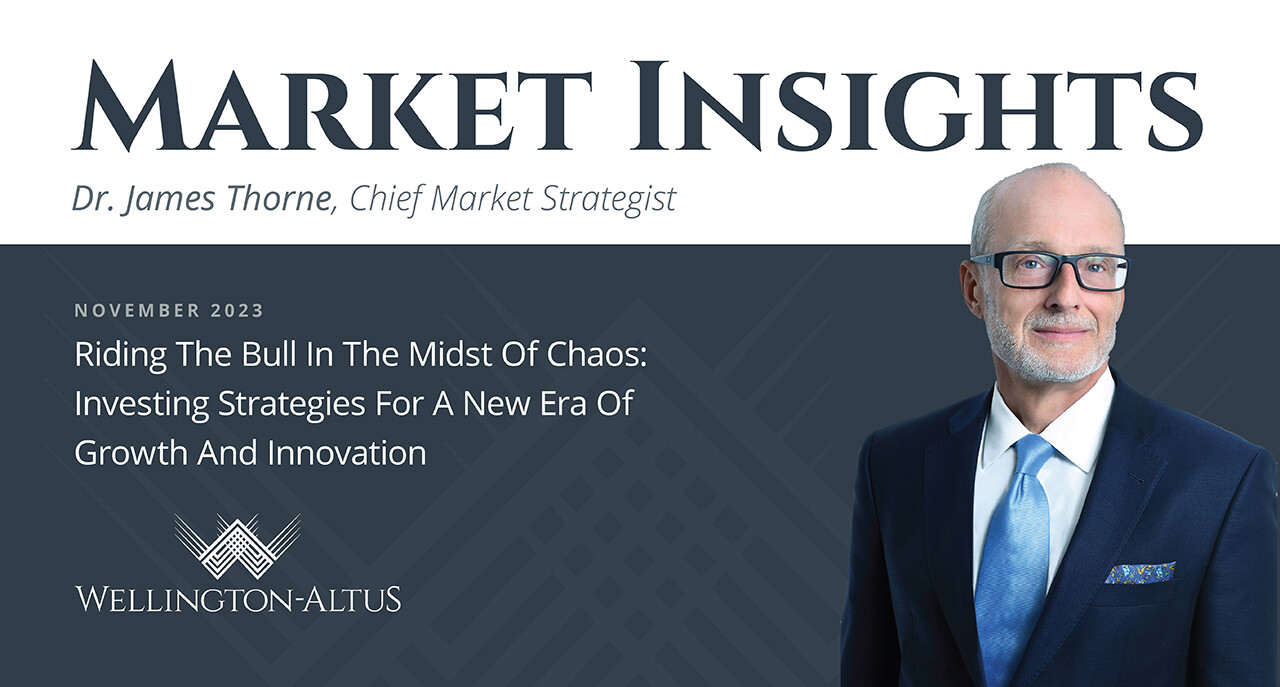In the investment world, volatility and uncertainty often reign, evoking a sense of unease. Remembering the call for 3000 on the S&P 500 Index in late 2022, the recent correction at 4600 might seem unnerving. Yet, like the hopeful message in Steely Dan’s song Any Major Dude Will Tell You, we should maintain our resilience, knowing that things will eventually fall together again.
History Repeating?
Using data, historical analysis, and objective evaluation, we can navigate these tumultuous financial waters. Our conclusion: inflation is closer to the central bankers’ target than consensus believes. We are headed back to secular stagnation, expecting a decline in interest rates, and foresee a secular bull market driven by innovation into the end of the decade, echoing the 1990s.
During the ‘90s, while Japan’s economic rise seemed to threaten the American dream, interest rates were heading to the zero-bound and seeds of technological innovation were being planted. The transformative power of the digital economy and China’s urbanization were unpredictable, yet as Mark Twain is reputed to have said, “History doesn’t repeat itself, but it often rhymes.”
Today, we grapple with the aftermath of a pandemic, the Great Financial Crisis, the rise of China, and the digital revolution. All of which leads us to ask whether we are facing a resurgence of inflation akin to early ‘90s predictions, or are we bound to return to secular stagnation and deflation? We anticipate interest in government bonds will rise. A closer look at the data suggests a significant rate decline awaits us in 2024, and the anticipated rapid rate increases could be a significant policy error in our globally interconnected financial system.
A “Turning” on Interest Rates?
Financial eyes are on 2024, expecting a large increase in U.S. Treasury auction sizes. This development could impact other fixed-income investments as the expanding Treasury market might pull dollars away from similar assets. Investors must remain alert to these dynamics.
Prominent economists argue that low interest rates mean government debt isn’t concerning. However, with real interest rates now exceeding most long-term economic growth estimates, the sustainability of high debt levels could become a pressing issue.
My base case is that we are returning to secular stagnation, with low interest rates and inadequate demand persisting. The current rate spike seems temporary, reminding me of Japan’s battle with deflation.
Before the pandemic, real interest rates declined due to slowing economic growth and reduced investment demand. With population growth still low, it’s logical to ask why interest rates wouldn’t return to pre-pandemic levels once inflation is under control. The Federal Reserve Bank of New York suggests that the real short-term interest rate, when the economy is strong and inflation stable, is about the same as before the pandemic. As inflation decreases, real rates will continue to rise. This, combined with high debt levels, makes a credit crunch seem imminent. The economy’s resilience in the face of U.S. Federal Reserve rate hikes could indicate a rise in the real short-term interest rate, or it could be temporary due to lags in monetary policy effects.
We are living in a time of intense chaos, often referred to as the “Fourth Turning.”1 We now know inflation was transitory and, burdened with excessive debt, our only solution is to ignite growth, akin to the approach taken between 1945 to 1970. It’s a time for investment-led growth bolstered by fiscal policy. We are on the brink of a deflationary shift, where artificial intelligence (AI) and blockchain will push organizations to innovate.
What Does This Mean for Investors?
In this low-growth environment, progress will outshine value. As Wall Street embraces blockchain and Bitcoin, we anticipate a resurgence in earnings. AI will be a key driver of productivity. Investment in secular growth themes will be crucial for equity market success, implying a stock picker’s market. Like the early ‘90s, we foresee a secular bull market lasting until the decade’s end.
However, with fewer stocks available today—half as many as in 1995—valuation based on history may seem expensive. Portfolios should lean towards large, secular growth companies. Pay attention to what millennials want, just as we did with boomers in the ‘90s. This time is not different!
As for bonds, the Fed’s hiking days are over and interest rates have peaked. By spring 2024, there may be many who missed the boat and are left with only “could have, should have, would have” regrets. If July marked the last Fed hike, history suggests rate cuts by March 2024. While markets can indeed remain irrational longer than one can remain solvent, as British economist and philosopher Lord John Maynard Keynes stated, it’s also true that fundamentals eventually matter. Sir John Templeton, American-British investor and banker once warned, “The four most dangerous words in investing are ‘this time it’s different’.”
Or in the words of Steely Dan, “When the demon is at your door. In the morning it won’t be there no more. Any major dude will tell you.”




